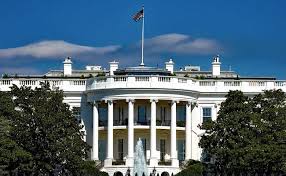India’s Healthy Life Expectancy Lags a Decade Behind Total Lifespan
India faces a significant challenge in bridging the gap between its citizens’ total lifespan and their healthy life expectancy. While advancements in medical technology and public health initiatives have contributed to an increase in overall life expectancy, the years lived in good health haven’t kept pace. This disparity underscores the need for a comprehensive approach to healthcare that prioritizes not just longevity, but also the quality of life for its aging population.
Understanding the Discrepancy
The difference between lifespan and healthy life expectancy is more than just a statistic; it represents the number of years individuals spend battling chronic illnesses, disabilities, and other health-related challenges. In India, this “unhealthy” period can stretch for nearly a decade, placing a considerable burden on individuals, families, and the healthcare system as a whole. Several factors contribute to this concerning trend:
Key Contributing Factors
- Inadequate Access to Quality Healthcare: While urban areas often have access to advanced medical facilities, rural communities still struggle with limited access to primary healthcare services, specialized treatments, and preventive care. This disparity results in delayed diagnoses, inadequate management of chronic conditions, and a greater likelihood of experiencing prolonged periods of ill health.
- Prevalence of Chronic Diseases: India is grappling with a rising tide of chronic diseases such as diabetes, heart disease, respiratory ailments, and cancer. Lifestyle factors, including poor diet, lack of physical activity, and exposure to environmental pollution, play a significant role in the increasing prevalence of these conditions. The early onset and inadequate management of these diseases contribute significantly to reduced healthy life expectancy.
- Poor Sanitation and Hygiene: Despite improvements in sanitation and hygiene practices, many communities still lack access to clean water and proper sanitation facilities. This leads to a higher incidence of infectious diseases, particularly among children, which can have long-term health consequences and contribute to a lower healthy life expectancy.
- Socioeconomic Disparities: Poverty, lack of education, and limited access to nutritious food significantly impact health outcomes. Individuals from lower socioeconomic backgrounds are more likely to experience malnutrition, exposure to environmental hazards, and limited access to healthcare, all of which contribute to a shorter healthy lifespan.
- Lack of Awareness and Health Education: A lack of awareness about healthy lifestyle choices, preventive healthcare measures, and the importance of early detection of diseases hinders efforts to improve healthy life expectancy. Effective health education programs are crucial for empowering individuals to make informed decisions about their health and well-being.
Addressing the Challenge: A Multi-pronged Approach
Improving India’s healthy life expectancy requires a concerted effort involving the government, healthcare providers, communities, and individuals. A multi-pronged approach focusing on the following key areas is essential:
Strengthening Primary Healthcare
Investing in and strengthening primary healthcare infrastructure is crucial for providing accessible and affordable healthcare services to all citizens. This includes establishing well-equipped primary health centers in rural areas, training healthcare professionals, and ensuring the availability of essential medicines and diagnostic facilities. A strong primary healthcare system can effectively address common health problems, promote preventive care, and manage chronic conditions at an early stage, thereby contributing to improved healthy life expectancy.
Promoting Preventive Healthcare
Shifting the focus from curative to preventive healthcare is essential for addressing the root causes of poor health. This includes promoting healthy lifestyles through public awareness campaigns, encouraging regular exercise and healthy eating habits, and providing access to preventive screenings for common diseases. Vaccination programs, early detection programs for cancer, and initiatives to reduce air pollution are also crucial components of a comprehensive preventive healthcare strategy.
Investing in Sanitation and Hygiene
Ensuring access to clean water and proper sanitation facilities is fundamental for preventing infectious diseases and improving public health. Government initiatives such as the Swachh Bharat Abhiyan are playing a crucial role in improving sanitation infrastructure. However, continued efforts are needed to ensure that all communities have access to these essential services. Furthermore, promoting hygiene practices such as handwashing with soap is vital for reducing the spread of infections.
Addressing Socioeconomic Disparities
Addressing socioeconomic disparities is crucial for creating a more equitable society where everyone has the opportunity to live a healthy life. This includes investing in education, creating employment opportunities, and ensuring access to nutritious food for all. Social safety nets and targeted interventions for vulnerable populations can also help to improve health outcomes and reduce inequalities in healthy life expectancy.
Leveraging Technology and Innovation
Technology can play a significant role in improving healthcare access and delivery. Telemedicine, mobile health applications, and electronic health records can help to reach remote communities, improve communication between healthcare providers and patients, and enhance the efficiency of healthcare systems. Furthermore, advancements in medical technology, such as new diagnostic tools and treatments, can contribute to improved health outcomes and increased healthy life expectancy.
The Road Ahead
Bridging the gap between lifespan and healthy life expectancy in India is a complex challenge that requires sustained commitment and coordinated action. By focusing on strengthening primary healthcare, promoting preventive healthcare, investing in sanitation and hygiene, addressing socioeconomic disparities, and leveraging technology and innovation, India can create a healthier and more equitable society where all citizens have the opportunity to live long and fulfilling lives. The journey towards improved healthy life expectancy is not merely a matter of public health; it is a reflection of a nation’s commitment to the well-being and prosperity of its people. Continuous monitoring, evaluation, and adaptation of strategies are essential to ensure that progress is made and that the benefits of improved healthcare reach all segments of society.























































Leave a Reply